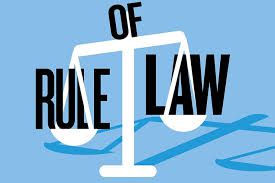Unraveling Damnum Sine Injuria in the Case of Construction and Demolition Dispute: Town Area Committee v/s Prabhu Dayal
This case essentially revolves around the construction and demolition of
structures. The case incorporates the maxim of "Damnum Sine Injuria".[1] The
ruling in this case goes on to define the necessities to prove malice. It
eliminates ambiguity around the concept of malice and analysis the decision of
the court given at the time. The heart of the matter revolves lies in whether
the plaintiff can seek compensation when the damage suffered was due to the
legal act of the defendant.
Defendant - Town Committee and Ors. v/s Plaintiff - Prabhu Dayal and Ors.
Counsel for Defendant - S.K. Tiwari
Counsel for Plaintiff- R.R. Agarwal and Bharatji Agarwal
Facts of the Case:
Judgement of The Supreme Court:
Judge - Hon'ble Hari Swarup J.
Upon reviewing all the facts of the case and making its observation, the court allowed the appeal of the defendant and overturned the decision of the lower appellate court and upheld the decision of the trial court.
Ratio Decidendi:
Following are a few of the comments on the case:
Conclusion:
The judgement of the Supreme Court clarified the ambiguity surrounding the application of malice in this case. It was affirmed that the defendant could not be held liable for mala fide intent as their actions were a direct result of the plaintiff's illegal act resulting in the application of the maxim of "Damnum Sine Injuria". The case explored some crucial principles around proving liability in civil matters.
End-Notes:
Translation - "Damage Without Injury"
Defendant - Town Committee and Ors. v/s Plaintiff - Prabhu Dayal and Ors.
Counsel for Defendant - S.K. Tiwari
Counsel for Plaintiff- R.R. Agarwal and Bharatji Agarwal
Facts of the Case:
- In this case, the plaintiff had constructed 16 illegal structures on top
of an old foundation. The said construction was undertaken without giving
due notice to the authority as per the procedure laid down in Section 178[2]
and without attaining the mandatory sanctions under Section 180[3] of the UP
Municipalities Act.
- The issue arose when the defendant demolished the illegal construction
while the plaintiff was out of station. The defendant served the first
notice to stop further construction and removal of the unauthorized finished
construction on 18th December under section 186[4] and 302[5] of the UP
Municipalities Act. At the time when the notice was served, the constructed
was undergoing. The notice instructed the plaintiff to stop any further
construction.
- A second notice was served to the plaintiff on 21st December by which the District Magistrate of the Town Area Committee ordered the construction to cease within 2 hours and if the plaintiff does not comply then the structures were to be demolished.
- Damnum Sine Injuria - "Damage without Injury".
This maxim implies that damage has been suffered by the plaintiff without an infringement of any legal rights. These are acts which do not infringe any fundamental or legal rights of an individual. It becomes compulsory for the plaintiff to prove that they suffered a legal injury.
- Can an illegal act cause a legal injury to any person?
- Can relief be provided to a person without any legal injury?
- Could someone be held responsible for causing harm to the other party if they are authorized to take legal action but do so with malicious intent?
Contentions of the Parties:
Plaintiff's Arguments:
- The plaintiff claimed that the construction of the 16 structures over the old foundation was legal.
- The counsel for the plaintiff argued that the demolition was illegal as the notice issued under the Section 186 of the UP Municipalities Act was bad. It was argued that the plaintiff was only given a time of 2 hours to stop the construction which was not adequate.
- It was also argued that since the plaintiff was out of town at the time of the demolition, there was no opportunity for the plaintiff to put forward their side of the story.
Defendant's Arguments:
- The defendant claimed that the plaintiff's construction since the beginning was illegal as the plaintiff did not follow the procedure laid under the UP Municipalities Act.
- It was stated that the demolition was legal as two notices were served prior to the demolition's execution and reasonable time was afforded as per the section 302. On this basis, it was claimed that the plaintiff was not entitled to any form of compensation.
Judgements of the Courts:
Judgment of The Trial Court:
- The court held the plaintiff guilty of not complying with the rules of construction and undertaking the construction without following the proper law.
- The court held that the defendant had the right to demolish and it was also stated that they provided ample time prior to demolishing the structures.
- After adjudicating the plaintiff guilty for the act, the suit was dismissed in the trial court.
- The plaintiff chose to appeal the decision.
Judgement of The Lower Appellate Court:
- The lower appellate court held that the defendant must pay damages amounting to 1000rs as the defendant 2 and 3 i.e., the chairman and vice chairman had acted with mala fide intent while demolishing the shops. It also stated that the duration given to the plaintiff i.e., 2 hours to cease the construction was not sufficient.
- The mala fide intent was proved by the plaintiff by claiming that the notice was bad as only 2 hours were given to stop the construction.
Judgement of The Supreme Court:
Judge - Hon'ble Hari Swarup J.
- The Supreme Court held that the lower court had been misdirected while giving its decision. It went on to state that mala fide intention is not applicable in this case.
- A point was raised by the plaintiff that as per section 102[6] of the Code of Civil Procedure, no appeal can be allowed as the damages awarded were less than the stipulated amount and it was also argued that as per the suit's nature it should be taken into cognisance by the court of small cases as per section 15[7] of the Provincial Small Cause Courts Act, 1887.
- The judge, however, stated that clause 35(j)[8] of the second schedule of the Provincial Small Cause Courts Act is relevant in this case. As per the plaintiff, the present suit is for compensation for damages caused due to an illegal execution of a legal process and such a suit is not cognizable by the Court of Small Cases.
- The court detected that the plaintiff was guilty of committing the wrong as he had not given notice for the construction under section 178 nor did he obtain the sanctions required under section 180 of the UP Municipalities Act.
- It was further stated that Section 185[9] provides the punishment and offences for non-compliance with sections 178 and 180 of the act and as per section 186, the board was empowered to undertake the demolition of the illegal structures constructed by the plaintiff as the offence falls under the umbrella of section 185.
- Furthermore, the plaintiff failed to appear before the authorities after being served the first notice on 18th December and no objections were raised about the insufficient time allotted to the plaintiff in the second notice served on 21st December.
Upon reviewing all the facts of the case and making its observation, the court allowed the appeal of the defendant and overturned the decision of the lower appellate court and upheld the decision of the trial court.
Ratio Decidendi:
- The court's rationale behind the decision revolves around the maxim of damnum
sine injuria. The essential point in this maxim is legal injury. It has to be
ascertained whether a legal injury was suffered by the plaintiff or not.
- In this case, the defendant had a legal right to demolish the construction and the plaintiff possess no right to compensation as the construction was not in compliance with the legal formalities.
Following are a few of the comments on the case:
- It can be conclusively said that the construction of the structures was illegal as the Plaintiff did not comply with the procedure laid down under the UP Municipalities Act.
- In this case, the maxim of Damnum Sine Injuria applies as the damage suffered by the plaintiff did not infringe any of their legal rights.
- The plaintiff did not suffer any form of legal injury as the defendants had the legal right to demolish the structure. As per the maxim of "Ex turpi causa non oritur action"[10] (Plaintiff - 'The wrongdoer'), the plaintiff's very act of undertaking the construction was illegal and therefore no action would arise out of the demolition of the structure as the defendant's action were a result of the illegal act of the plaintiff.
- The court held that the plaintiff's defence of the fundamental right to hold property was not viable as the right does not exist in case of properties that have either been acquired or constructed illegally which implies that the plaintiff had not suffered any injury of his legal rights.
- It can be affirmed that the lower court's judgment may have been misinformed since the presence of malice is not relevant in this scenario. The plaintiff's case revolves around seeking compensation for damages resulting from the defendant's unlawful actions, and compensation can only be granted if it can be proven that the defendant's actions were indeed illegal. Whether the defendant acted with malice or not is not a decisive factor in this case. The pivotal issue is the legality of the defendant's actions, rather than their intentions or any malicious motives.
Conclusion:
The judgement of the Supreme Court clarified the ambiguity surrounding the application of malice in this case. It was affirmed that the defendant could not be held liable for mala fide intent as their actions were a direct result of the plaintiff's illegal act resulting in the application of the maxim of "Damnum Sine Injuria". The case explored some crucial principles around proving liability in civil matters.
End-Notes:
- UP Municipalities Act, 1916, � 178, No. 45, Acts of Parliament, 1916, (India)
- UP Municipalities Act, 1916, � 180, No. 45, Acts of Parliament, 1916, (India)
- UP Municipalities Act, 1916, � 186, No. 45, Acts of Parliament, 1916, (India)
- UP Municipalities Act, 1916, � 302, No. 45, Acts of Parliament, 1916, (India)
- CODE CIV. PROC. �102
- Provincial Small Cause Court, 1887, � 15, No. 09, Acts of Parliament 1887 (India)
- Provincial Small Cause Court, 1887, Schedule 2, cl. 35(j), No. 09, Acts of Parliament, 1887 (India)
- UP Municipalities Act, 1916, � 185, No. 45, Acts of Parliament, 1916, (India)
- Translation - "No action can arise out of an illegal act"
Law Article in India
Legal Question & Answers
Lawyers in India - Search By City
LawArticles
How To File For Mutual Divorce In Delhi

How To File For Mutual Divorce In Delhi Mutual Consent Divorce is the Simplest Way to Obtain a D...
Increased Age For Girls Marriage

It is hoped that the Prohibition of Child Marriage (Amendment) Bill, 2021, which intends to inc...
Facade of Social Media

One may very easily get absorbed in the lives of others as one scrolls through a Facebook news ...
Section 482 CrPc - Quashing Of FIR: Guid...

The Inherent power under Section 482 in The Code Of Criminal Procedure, 1973 (37th Chapter of t...
The Uniform Civil Code (UCC) in India: A...

The Uniform Civil Code (UCC) is a concept that proposes the unification of personal laws across...
Role Of Artificial Intelligence In Legal...

Artificial intelligence (AI) is revolutionizing various sectors of the economy, and the legal i...








Please Drop Your Comments